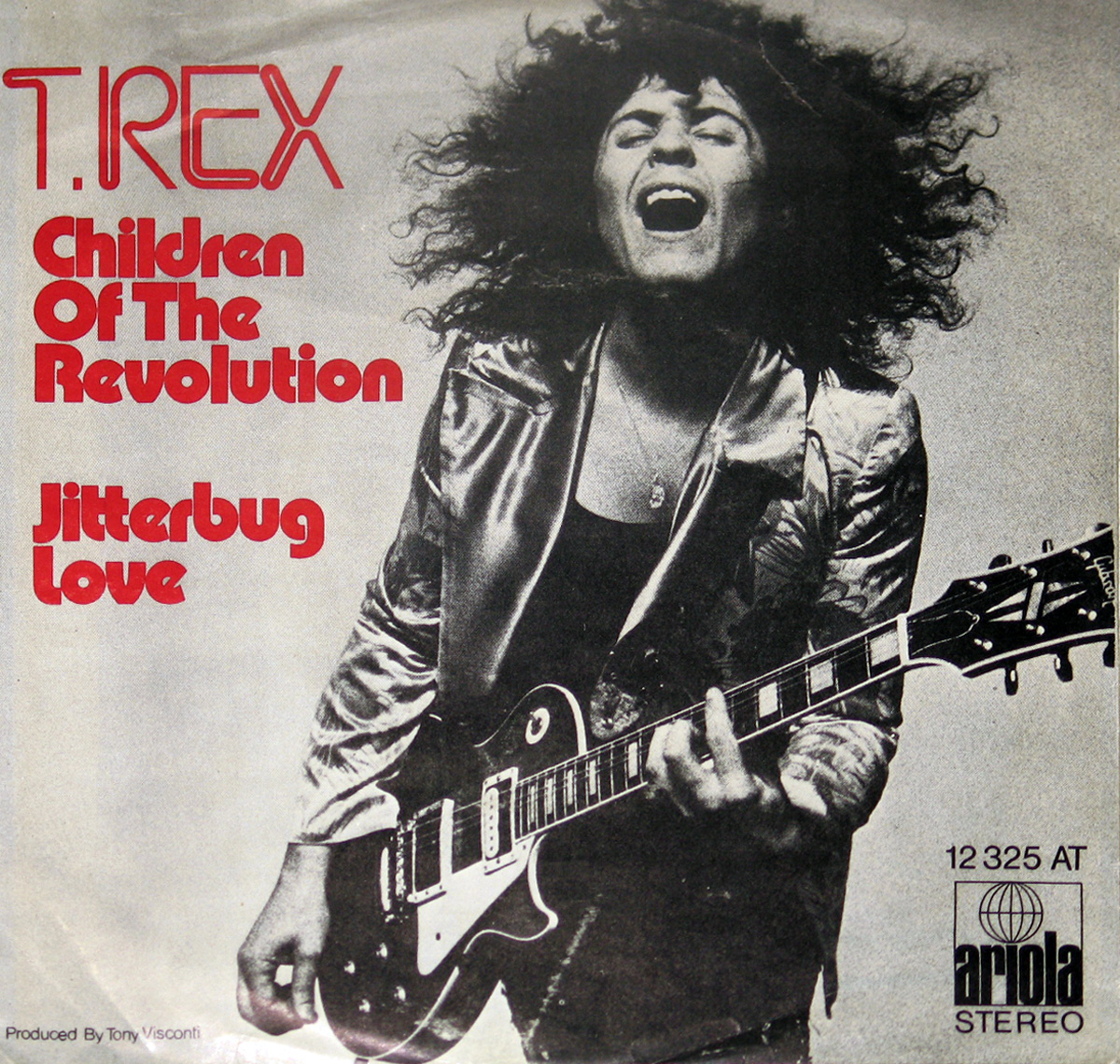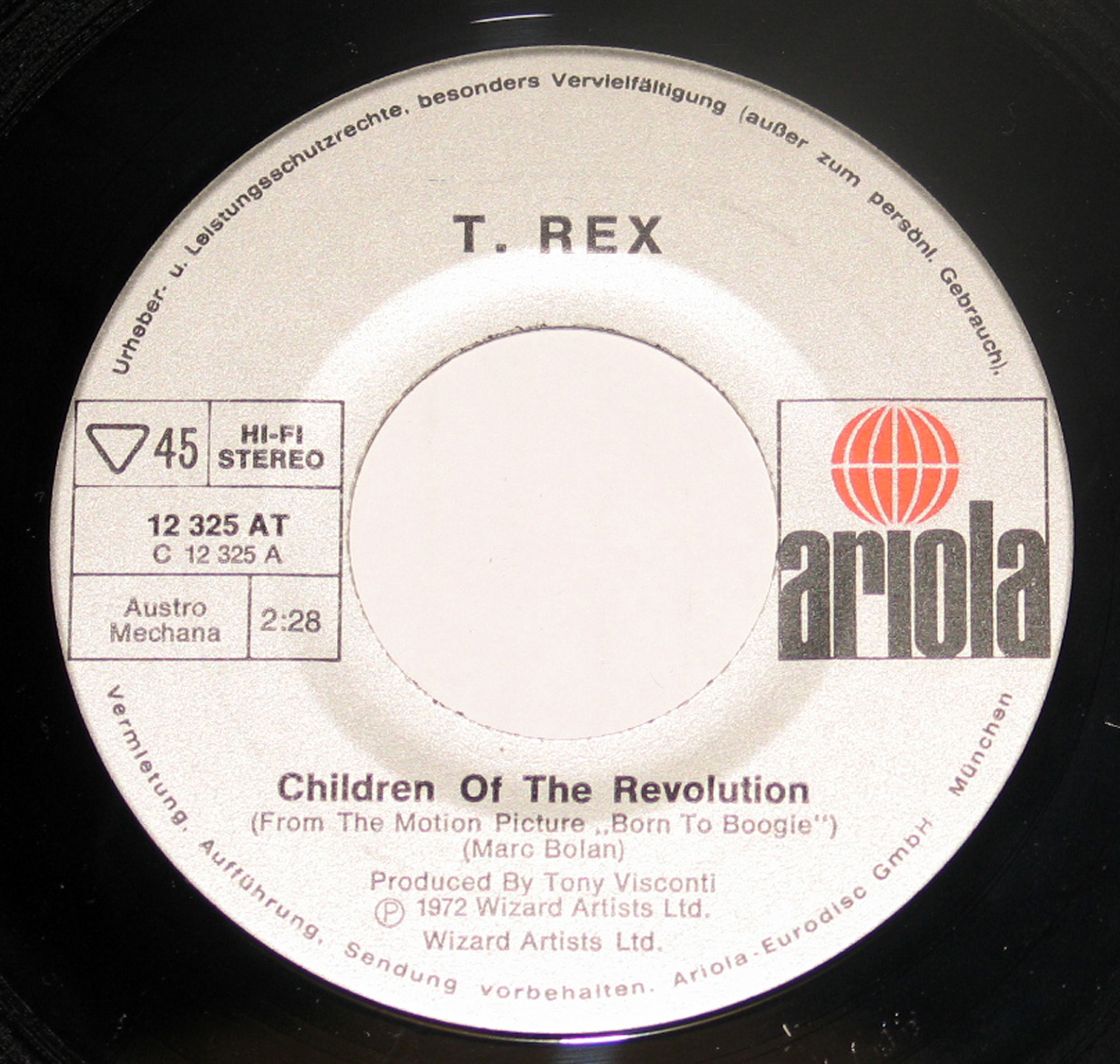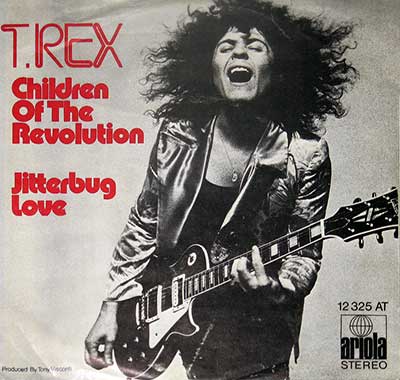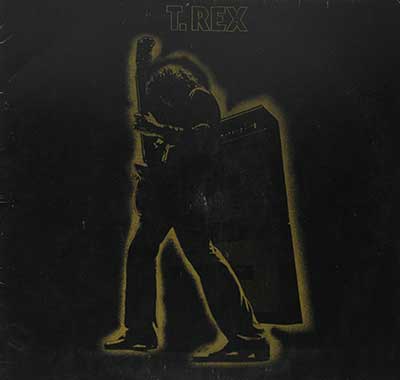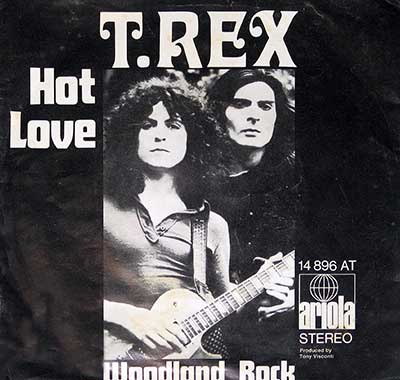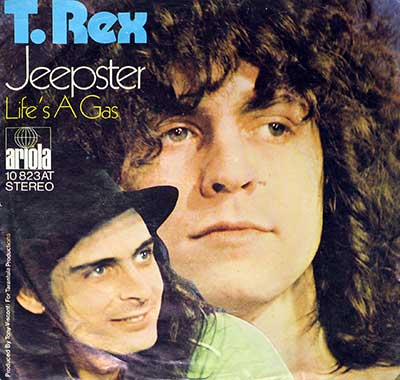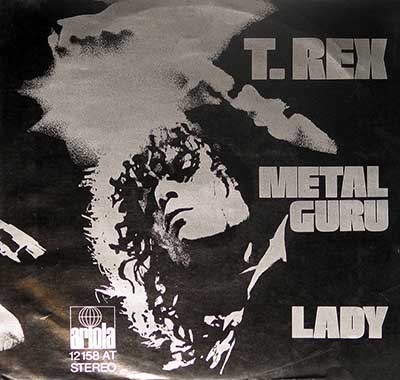In the summer of '72, when the world was still reeling from the seismic shifts of the '60s and the groovy calm of the early '70s, Marc Bolan stepped into the spotlight with a swagger that dripped from every sinewy note of T. Rex’s latest offering, the “Children of the Revolution” b/w “Jitterbug Love” 7” vinyl single. This wasn’t just another record; it was a seismic call to arms, a Technicolor anthem that dared to embody the elusive spirit of rock ‘n’ roll, cloaked in glitter and sensuality.
Historical Context: The Zeitgeist of 1972
To understand “Children of the Revolution,” one must first plunge into the swirling cauldron that was 1972. The utopian dreams of the '60s had frayed, and while some clung to the ragged edges of peace and love, others were embracing the dawn of something new. Glam rock was slinking onto the scene, a phoenix rising from the ashes of flower power, strutting into the limelight with sequins, satin, and a sardonic grin. T. Rex, fronted by the ever-charismatic Marc Bolan, was at the forefront of this glitter-strewn parade.
Bolan had already tasted success with the likes of “Get It On” and “Hot Love,” but “Children of the Revolution” was different—it was a statement. Released in September, just as the leaves were beginning to turn, it arrived like a bolt from the blue, capturing the restless energy of a generation ready to kick over the traces of their elders and find their own path.
Musical Exploration: A Sonic Revolution
"Children of the Revolution" is a quintessential example of Bolan's ability to fuse rock's raw power with a glamorous sheen. The track opens with a thudding drumbeat, courtesy of Bill Legend, soon joined by a swaggering, primal guitar riff that echoes the bluesy roots of rock but with a polished, almost futuristic edge. Bolan's voice slithers in, equal parts sneer and croon, delivering lyrics that are both defiant and celebratory:
This was more than music; it was a manifesto. Bolan’s lyrics, often criticized as nonsensical or overly simplistic, were, in fact, incantations, spellbinding in their repetition and cadence. The orchestration, overseen by producer Tony Visconti, is lush yet restrained, with strings that swell and recede like waves crashing on a glittering shore. The song brims with the energy of a new world waiting to be born, but it’s tinged with an undercurrent of the bittersweet, as if Bolan knew that revolutions often devour their children.
On the flip side, “Jitterbug Love” is a looser, funkier affair, a brief but potent burst of energy clocking in at just under three minutes. The track is an exercise in groove, with Mickey Finn's congas adding a tribal pulse that gives the song an almost ritualistic feel. Bolan's guitar, drenched in distortion, scratches and howls over the beat, while his vocals drip with sensuality and abandon. Lyrically, it’s as cryptic as anything he ever penned—“I’m just a jeepster for your love,” he purrs, evoking images that are equal parts comic strip and fever dream.
Controversies: A Revolution in Glitter
As with much of Bolan’s work, “Children of the Revolution” didn’t escape the glare of controversy. Glam rock, with its androgynous fashion and overt sexuality, was viewed by many as a threat to traditional values. Bolan’s persona—a blend of fey sensitivity and raw sexuality—rattled the cages of the conservative establishment. The title itself was enough to raise eyebrows; “Children of the Revolution” sounded like a rallying cry for youth to break free from societal constraints, to revel in excess and hedonism.
Bolan, of course, was no stranger to such controversies. His very existence seemed to provoke the establishment, and he reveled in it. The song's promotion included a raucous appearance on "Top of the Pops," where Bolan, clad in his usual spangled attire, seemed to radiate an otherworldly glow. The performance was a gauntlet thrown down to anyone who still clung to the fading idealism of the '60s, a reminder that the '70s were here and they were going to be loud, bright, and unapologetically flamboyant.
Production Team and Recording Studio: A Glittering Collaboration
Behind the scenes, the production of “Children of the Revolution” was a masterclass in crafting the glam rock sound. Tony Visconti, who had already worked with Bolan on several previous records, was the architect of the single’s lush yet biting sound. Visconti’s production is a study in contrasts—under his guidance, the songs are both dense and airy, with a richness that never feels overblown. The balance of rock's raw power with the ornate flourishes of strings and backing vocals is a testament to Visconti's skill in the studio.
Recording took place at the now-legendary Trident Studios in London, a hotbed of innovation where the likes of David Bowie, Elton John, and Queen were also forging their paths. Trident, with its state-of-the-art equipment and top-notch engineers, was the perfect setting for Bolan's vision. The studio’s acoustics and Visconti’s deft touch ensured that every note shimmered, every beat hit with precision, creating a sonic landscape that was as vivid and bold as Bolan himself.
The Genre: Glam Rock’s Golden Moment
Musically, “Children of the Revolution” and “Jitterbug Love” are quintessential glam rock. The genre, a cocktail of rock ‘n’ roll’s swagger, pop’s hooks, and the theatricality of cabaret, was the perfect vehicle for Bolan’s artistic ambitions. Glam rock was about more than just music; it was an attitude, a lifestyle, and Bolan was its high priest. The shimmering riffs, the pounding rhythms, the lyrics that oscillated between the profound and the absurd—these were the hallmarks of a sound that was as much about rebellion as it was about fun.
Conclusion: A Revolution Set to Music
In the end, “Children of the Revolution” b/w “Jitterbug Love” stands as a testament to Marc Bolan’s genius—a snapshot of a moment when rock ‘n’ roll was more than just music; it was a revolution. Bolan understood that the best revolutions are those that seduce as much as they provoke, that offer escape as well as confrontation. This single is a glittering, defiant cry into the void, a reminder that in the world of T. Rex, to be alive is to be in motion, always dancing to the beat of a new revolution.
